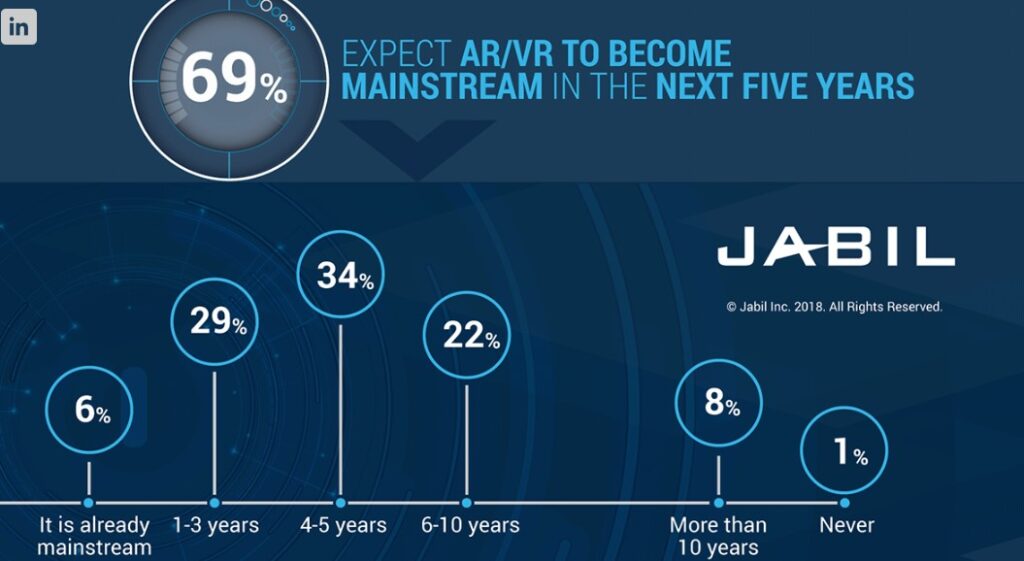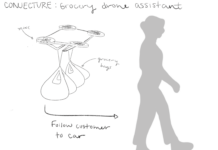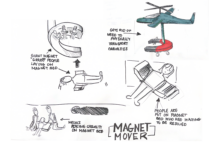The history of virtual reality and augmented reality technology goes back to 1838, when Charles Wheatstone created his stereoscope, which superimposed an image over each of the user’s eyes, thus creating a distant 3D image. Over the years, Edwin Link’s flight simulator, Morton Heilig’s telesphere mask, Ivan Sutherland’s “Sword of Damocles” VR headset and many more inventions contributed to the cutting-edge technology we recognize today. Of course, the future of virtual reality (VR) and augmented reality (AR) will make our current technology look as primitive as the early experimentations.
Takeaways on Future of VR & AR
Although augmented reality technology is less mature than virtual reality due to the limitations of AR technology, lack of standardization and a higher price tag, it is already being utilized in industries including manufacturing, healthcare and logistics. Augmented reality experiences are showing early signs that the technology is set to transform commercial and industrial markets. However, there is still work to be done before these technologies can reach mainstream adoption.
Virtual reality is showing some effective industry use-cases as well, from real estate applications to tourism. These types of innovative VR experiences are unveiling in industries worldwide.
Many of the virtual reality headsets rely on smartphones to display the content. While these devices are a good introduction to VR, they lack the visual quality to deliver an immersive experience. Headsets tend to be bulky as well, making prolonged usage unlikely.
Virtual and augmented reality technology will consolidate and come in two forms in the future: tethered systems and standalone units. Tethered systems will be comprised of a unit or wearable on the head, with a wire attached to a processing unit. Standalone units will house all systems—from display to processing—within the unit and be available as a wearable. We’re already seeing early signs of these trends as manufacturers choose a mixture between standalone and tethered units. Although some standalone units are already available, these devices are more complex and difficult to implement.
The AR/VR devices of the future will provide personalized, accessible and well-designed experiences. As these elements take hold, a platform shift is imminent. In my opinion, in three years we are going to see new AR glasses with LTE capabilities that will become an alternative to the smartphone. With improved immersive technology and AR capabilities, the form factor of our favorite consumer electronics will change and we’ll never look back. In the next few years, we may be using augmented reality technology to check our text messages and smart glasses to scroll through Instagram.

Reference:
What is the future of virtual and Augmented Reality Technology?: Jabil. Jabil.com. (n.d.). Retrieved February 2, 2023, from https://www.jabil.com/blog/future-of-augmented-and-virtual-reality-technology.html



